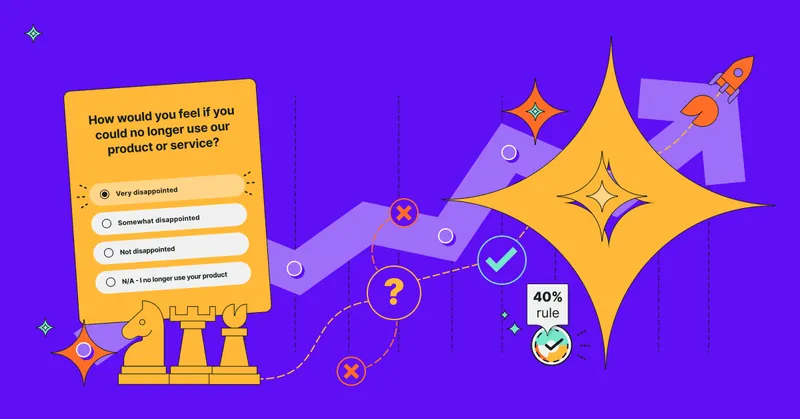Imagine being able to sift through the noise of the internet to find the true voice of your customer. That's the power of understanding the brand sentiment—emotions and opinions that customers express across various platforms, from social media to product reviews.
Brand sentiment analysis is a crucial tool for businesses aiming to stay ahead of the curve. It's not just about gathering data; it's about making sense of it all. This data-driven approach offers a clear view of how consumers perceive your brand, providing actionable insights for strategic planning. It's the difference between guessing and knowing, between reacting and strategizing.
This guide will explore how brand sentiment analysis can illuminate digital experience and influence marketing strategies. We'll delve into how advancements in technology are making it easier to navigate this powerful tool.
Get ready to harness the power of sentiment analysis to fine-tune your brand's presence and make informed decisions that resonate with your audience.
Understanding Brand Sentiment
Brand sentiment reflects the emotions and attitudes customers hold towards a brand. It encapsulates both positive and negative perspectives, as well as neutral stances that customers may exhibit.
What Is Brand Sentiment
Brand sentiment, also known as customer sentiment, is the overall emotion or perception that people harbor towards a brand based on their cumulative experiences and the information available to them. This encompassing emotion can be positive, negative, or neutral.
- Positive sentiment is indicative of satisfaction and advocacy, whereas
- Negative sentiment often results from unfavorable experiences, leading to criticism and potentially damaging a brand's reputation.
- Neutral sentiment represents an indifferent or balanced perspective, where a consumer might be aware of a brand but is neither actively positive nor negative towards it.
Importance of Customer Perception
Customers' perception of a brand is critical because it directly influences their buying decisions and loyalty. A strong, positive brand sentiment can lead to increased trust and higher sales, while a negative brand sentiment can deter potential customers and diminish the brand's standing in the market. Monitoring and understanding customer sentiment is essential for brands to manage their reputation, tailor their marketing campaigns effectively, and maintain a competitive edge.

Brand Sentiment Analysis Explained
Brand sentiment analysis decodes the emotional tone from written language, harnessing machine learning and natural language processing to interpret and classify opinions expressed about brands, products, or services.
Basics of Brand Sentiment Analysis
At its core, sentiment analysis is the computational process of determining whether a piece of writing is positive, negative, or neutral. It is a form of text analysis utilized by businesses to monitor brand and product sentiment in customer feedback, social media commentary, and other digital channels.
Brand Sentiment Analysis Models
There are primarily three types of sentiment analysis models: document-based, which considers the entire text as a single data point; sentence-based, which analyzes sentiments at the sentence level; and aspect-based, which focuses on the sentiment towards specific elements within the text.
Machine Learning in Brand Sentiment Analysis
Machine learning, a subset of artificial intelligence, plays a crucial role in sentiment analysis by enabling algorithms to learn from data patterns. Sentiment analysis tools apply these machine learning techniques to enhance accuracy and adapt to different contexts in text.
Natural Language Processing
Natural Language Processing (NLP) is essential for machines to understand and interpret human language. It involves several AI tasks like named entity recognition and part-of-speech tagging to break down and analyze text, allowing for more nuanced sentiment detection.
Sentiment analysis empowers businesses to gather strategic insights, refine customer service, and get ahead of negative public relations by interpreting online sentiment with increasing precision.
Brand Sentiment Analysis Techniques
Sentiment analysis techniques are essential for understanding the emotions and opinions conveyed in textual data related to a brand. These techniques enable businesses to grasp public sentiment, tailor marketing strategies, and react promptly to customer feedback.
Manual vs. Automatic Brand Sentiment Analysis
Manual sentiment analysis involves human evaluators interpreting and classifying emotions from text. While it can be highly accurate, considering the nuanced understanding humans have of language, it's also time-consuming and less scalable than automatic sentiment analysis. Automated methods employ text analysis tools and machine learning to quickly process large volumes of data, although they may struggle with complex linguistic nuances like sarcasm or idioms.
Sentiment Analysis Algorithms
Sentiment analysis algorithms are at the heart of automatic sentiment analysis. Machine learning models can be trained on annotated data sets to recognize positive, negative, or neutral sentiments. Common algorithms include linear regression, Naïve Bayes, and neural networks, each with its strengths in handling different aspects of sentiment analysis. For instance, neural networks are well-suited for comprehending contextual clues in opinion mining.
Text Analysis Approaches
Text analysis approaches in sentiment analysis often feature a combination of Natural Language Processing (NLP) techniques. These include tokenization, part-of-speech tagging, and parsing, which help to break down and understand the structure of the text. Lexicon-based approaches rely on a pre-built library of words associated with particular sentiments, and machine-learning approaches that learn from data examples are commonly employed. Each tactic serves to refine the accuracy of sentiment classification, providing businesses with valuable insights.
Analyzing Social Media Data
Social media platforms have become pivotal in capturing the public’s perception of brands. This section will dissect the significance of analyzing social media data to understand and improve audience sentiment toward a business.
Importance of Social Media Platforms
Social media platforms serve as a barometer for brand sentiment, offering insights into consumer opinions, trends, and behaviors. The vast user base of platforms such as Twitter, Facebook, and Instagram makes them invaluable for brands to monitor and analyze audience sentiment.
Tracking Brand Mentions on Social Media Channels
Monitoring brand mentions across social media involves identifying and analyzing every instance where the brand is referenced. Businesses use sophisticated social listening tools like Brand24 to detect mentions and gauge social media sentiment, thereby understanding the impact of their brand presence online.
Engaging with Audience Sentiment
Engagement with audience sentiment goes beyond tracking; it involves responding to social media data and adjusting strategies. Actively engaging with consumer feedback, whether positive or negative, strengthens customer relations and can transform brand perception on social media platforms.
Implementing Brand Sentiment Analysis
To fully harness the power of sentiment analysis, businesses must integrate it into various facets of their operations. This involves tailoring marketing approaches based on sentiment scores, scrutinizing customer feedback, analyzing survey responses, and employing real-time sentiment tracking to gauge campaign performance.
Integrating Brand Sentiment Analysis in Marketing
Incorporating sentiment analysis into marketing strategies allows companies to measure the effectiveness of their campaigns by providing a sentiment score. This quantitative measure helps marketers adjust tactics in response to the emotional tone reflected in social media posts, reviews, or other customer interactions. For example, a positive sentiment score after a product launch could validate the current marketing approach, while a negative score may indicate the need for strategy pivots.
Feedback and Survey Analysis
Customer feedback and survey responses serve as critical data points for sentiment analysis. By parsing through surveys with natural language processing techniques, companies can extract valuable insights, identifying what customers think and how they feel about products, services, or brand experiences. This level of analysis is crucial for improving customer satisfaction and loyalty.
Real-time Sentiment Tracking
Real-time sentiment tracking tools enable businesses to track sentiment continuously across various digital platforms. By monitoring social media comments, reviews, and customer inquiries as they happen, companies can swiftly address negative feedback or capitalize on positive sentiment. Real-time analysis aids in understanding the immediate impact of marketing campaigns and can be instrumental for competitive analysis.
Impact on Business Decisions
Brand sentiment analysis guides companies in refining their strategies across various aspects of their operations. By interpreting customer emotions and opinions, businesses can make informed decisions that enhance performance and customer satisfaction.
Customer Experience and Service
Analyzing customer sentiment helps in identifying areas of strength and weakness within a company’s customer service. By spotlighting negative feedback, a customer service team can address issues promptly, ensuring that future interactions lead to improved customer satisfaction. Positive sentiment, on the other hand, can indicate successful practices that should be continued or expanded upon.
Product and Service Development
Actionable insights derived from sentiment analysis empower businesses to fine-tune their products and services to meet customer needs. By understanding the feelings and preferences of their target audience, companies can make targeted improvements that resonate with their customers, often leading to better market reception and increased loyalty.
Competitive Analysis
Sentiment analysis serves as a critical tool for competitive analysis. Companies can monitor not only the sentiment towards their own brand but also compare it with competitors. Understanding the market position in terms of customer sentiment allows for strategic adjustments that can provide a competitive edge in the marketplace.
Measuring and Improving Sentiment
In the realm of brand management, measuring and improving sentiment is a pivotal exercise for staying aligned with customer perceptions and industry trends.
Assessing Sentiment Impact
Companies rely on metrics that capture positive and negative perceptions to accurately measure brand sentiment. This involves examining social media reactions, customer reviews, and survey responses to gauge the sentiment insights. Companies often track specific keywords and phrases that are indicative of sentiment, which allows them to quantify the emotional tone behind customer communications. Tools such as Qualtrics provide methodologies for understanding the impact sentiment has on brand perception.
Strategies to Improve Brand Sentiment
Once a brand has understood its current sentiment standing, the focus shifts to improvement. Improving brand sentiment can involve a multitude of strategies, from enhancing customer service to innovating product features. One approach could involve creating more engaging content or campaigns that resonate with the target audience. Consistency in messaging and ensuring all customer touchpoints reflect the brand's values are also critical components.
Responding to Sentiment Shifts
Brands must be prepared to respond quickly to changes in sentiment, especially if the shift is negative. This responsiveness conveys that a brand values feedback and is committed to customer satisfaction. Recognizing emerging trends in sentiment can also signal the need for a strategic pivot, potentially creating opportunities for product development or new customer experiences.
How using Survicate can complement sentiment analysis
Gathering direct customer feedback is a powerful source of data for sentiment analysis. Survicate helps in collecting customer insights across multiple channels, including emails, websites, in-product interactions, and mobile apps. This direct feedback acts as a baseline for analyzing sentiment, allowing businesses to tailor their approach and enhance the accuracy of their sentiment tracking.
By using Survicate, you can create targeted surveys that gather qualitative data from users. This qualitative feedback is invaluable in sentiment analysis because it adds a personal dimension that purely algorithmic methods may miss.

Using Survicate with sentiment analysis tools offers a more robust understanding of customer emotions. Sentiment analysis tools typically analyze the tone of customer interactions using techniques like Natural Language Processing (NLP) and machine learning. Combined with Survicate's direct feedback, businesses can validate and enrich the sentiments extracted from broader data sources.
Leveraging multiple data sources, such as direct feedback via Survicate and sentiment analysis models, provides businesses with a comprehensive view of their brand's health. This dual approach allows for:
- Identifying specific issues affecting customer sentiment.
- Aligning sentiment analysis algorithms with actual customer feelings.
- Enhancing real-time sentiment tracking with tangible feedback.
Survicate’s capability to collect feedback in diverse environments means that no touchpoint is left unexamined. This detailed view will help you better understand the nuances of your customer sentiment, ultimately leading to informed business decisions and strategies designed to improve the customer experience.
To see how Survicate can augment your sentiment analysis efforts, sign up for the 10-day free trial, which includes all features of the Business Plan.













.svg)

.svg)



